
Seven-Generation Decision-Making
A major factor of sustainability is thinking about how we
Share:
Share:
istock / chombosan
By Tom Szubka, CAPP and Tania Schleck
These days, everything around us is getting smart—your phone, your watch, even the lightbulbs in your house. Smart can make things easier—you can have groceries delivered to your door by hollering at Alexa without getting out of bed. Smart can be annoying—Alexa can also holler back at you when it is time to wake up (to put away the groceries just getting delivered).
Smart has been coming fast at us for the last several years and maybe faster by the pandemic. Yet, it seems some cities, communities, and large institutions have a hard time keeping up. We know “smart” has come to the parking and mobility world, however, there are places still using “old-fashioned” parking meters and collecting cash with a cigar box.
To be fair, smart can be overwhelming. Especially if you are a large institution, city, or community, which often have limited resources, a diverse citizen base, and have been historically reactionary with technology and policy advancement. Missteps in the public sector are overwhelmingly scrutinized, unlike in the private sector where the same paths are part of the research or product development cycle. There is far more incentive to get it right, than to keep up.
Still, it is important not to be left behind and organizations should start trying to understand what to expect when beginning their journey into the realm of the smart.
When you google the definition of ‘smart,’ the two definitions of its use as an adjective read:
Drilling down a bit more on the first definition, having a quick wit is a characteristic of thinking and responding quickly, while intelligence is having the ability to acquire and apply knowledge and skills. This infers the ability to apply information and skills quickly and effectively.
A device in today’s environment is marketed as smart, however by the second definition it must be programmed to do something without direct instruction (independent action). A smartphone isn’t any smarter than an old rotary phone if its “smart” capabilities are not used.
Smart can be simply stated as how well you use what you have.
The tools we use in a smart community are not inherently smart, but the system or users can become smart with the proper use of the tools and data they generate.
For years communities have had systems (trash, roads, parking, water, sewer, etc.) working independently. Now, with technology improving data gathering and communication, these communities need to bring it all together.
This all seems reasonable but let us consider why a community wants to invest effort and dollars into creating this smart infrastructure.
Gathering a consensus of what defines a smart city/community/campus, similar phrases and adjectives are used to describe the what and the why:
A smart community…
…as a way to (purpose)…
While there is no sole definition of a smart city/community/campus, it can generally be deduced that the goal is to simply Make Life Better.
The utilization of technology and data crosses all industries and services comprising a community. The integration and multi-disciplinary sharing of technology, data, and resources promote more efficient and effective use of all three to improve the services and experiences of the community.
Smart solutions make life better from a variety of perspectives: transactional, movement, storage, curb management, aggregation, planning, and efficiency. Following are examples of smart solutions and how communities use smart technology to make life better for people.
Numerous financial transactions are made every day. Smart technology helps to streamline the transaction process and provide convenience for consumers.
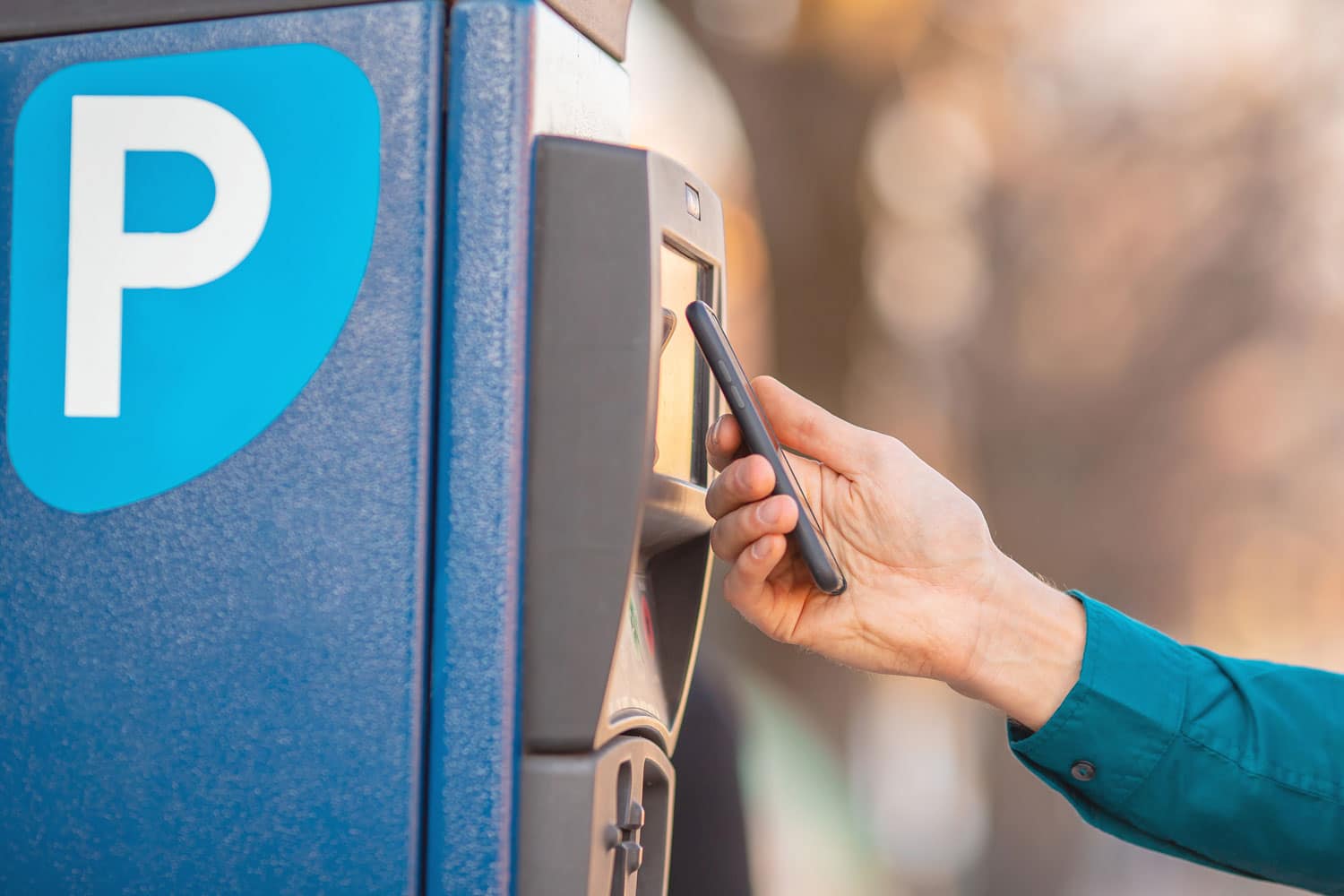
Smart city solutions have improved the way we move by providing us with more smart mobility options.
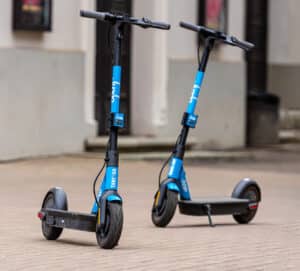
Smart solutions can make finding a parking space easier and faster. The City of San Francisco implemented SF Park, a demand-responsive parking program, where the city installed smart parking meters and in-ground sensors to measure parking occupancy. When demand is high, parking prices increase and when demand is low prices decrease. As a result of the initial SF Park pilot program, the following improvements were seen in SF Park areas:5
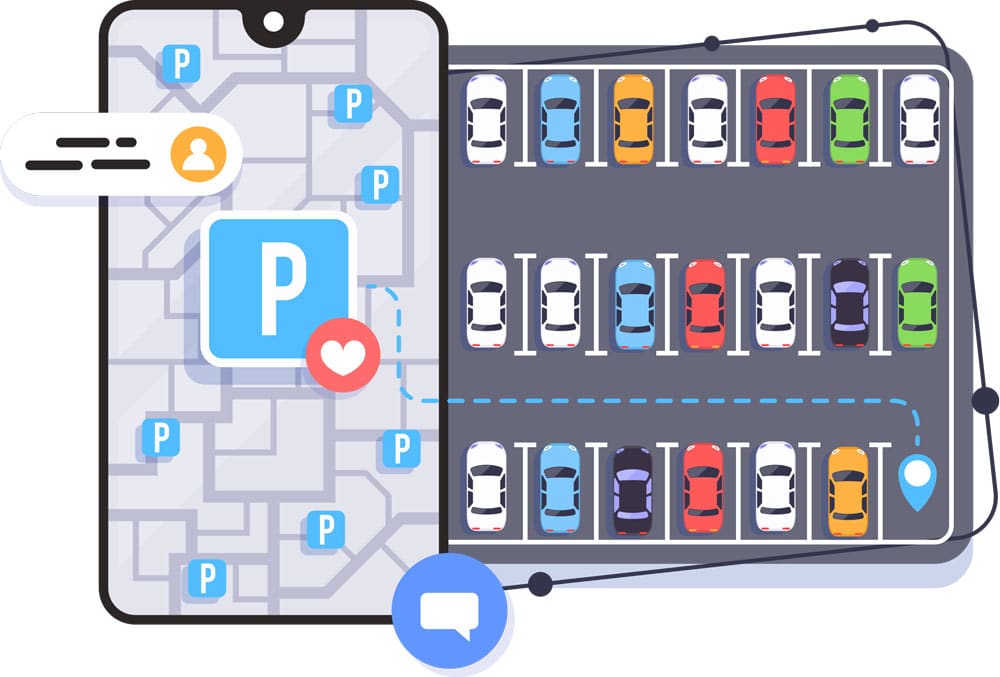
The curb has numerous demands, including parking, commercial deliveries, TNC pick-up/drop-offs, food delivery services, shared bikes and scooters, and outdoor community spaces. Smart technology solutions help cities more effectively plan for and manage their curb with inventory, utilization, and visualizing their current mix of curb uses and regulations. Cameras using video analytics, mapping, and smartphone app-based technologies can help with data capture, processing, and visualization by capturing curb activity throughout the day.
Washington, D.C. conducted a three-month pilot where curb parking was removed at nine locations to create loading zones for commercial pick up and drop off. The city partnered with curbFlow to provide a curb management app enabling commercial drivers to reserve time slots in loading zones, on-demand or in-advance. As a result, incidents of double parking and illegal U-turns decreased by an estimated 64% in immediate proximity to the zones.6 The City also collected valuable data on curb activity to inform future planning efforts.
Curb management technology is still new and continuously evolving and opportunities to vet and test the range of new curb management technology products in the field are ongoing. For example, Walker Consultants worked with the City of Sacramento on a passenger loading pilot and tested curb activity with computer vision technology. The city had anecdotal reports of frequent pickup and drop-off activity at the curb across the street from a hospital. During the pilot, the city removed the parking meters, marking the area as a passenger loading zone, and collected curb activity data during the pilot using camera and video analytic technology. The data disproved the anecdotal reports as people were still parking in this space long term, despite the labels for passenger loading, proving there was not enough activity to warrant a passenger loading zone. The pilot provided the city with valuable data to make informed decisions and criteria for future curb planning efforts.
A critical component of successful smart cities is the aggregation of data. Boston Consulting Group (BCG) examined approximately 75 smart-city applications in a variety of categories including buildings, energy, environment, health, mobility, and public services.7 Nearly half the applications require data sourced from multiple industries or platforms. For example, a parking reservation app assembles garage occupancy data, historical traffic data, current weather data, and information on upcoming public events to determine real-time parking costs. In looking at a broader sense of future applications, BCG found 85% will require cross-industry data aggregation.
Cities are using technology to plan their infrastructure more effectively.
Smart solutions help improve efficiency for the administering entity and the end user.
When communities can “bring it all together,” more comprehensive and robust solutions become available, broadening the appeal and experience of community life.
Data is how the knowledge and experience of a community is expressed, making data the currency of any smart community. How data it is gathered, communicated, and utilized is really the essence of what constitutes a smart community. The “smart” infrastructure provides the process and tools that collect the data, process the data into usable formats, communicate the data, and analyze the data. All of which becomes a perpetual feedback loop when decisions makers use the analyzed data to make life better for its citizens.
Tools are necessary in any environment where data collection is required. Tools:
Tools have been a focus in our industry for many years, however, by themselves they cannot go beyond the execution of their intended use. This creates the need to integrate multiple tool and data types into a data management platform.
The platform is the “behind the scenes” workhorse organizing and formatting the data collected to facilitate use. Ideally the platform can:
The data should now be in a usable format to communicate and analyze for operational and policy adjustments.
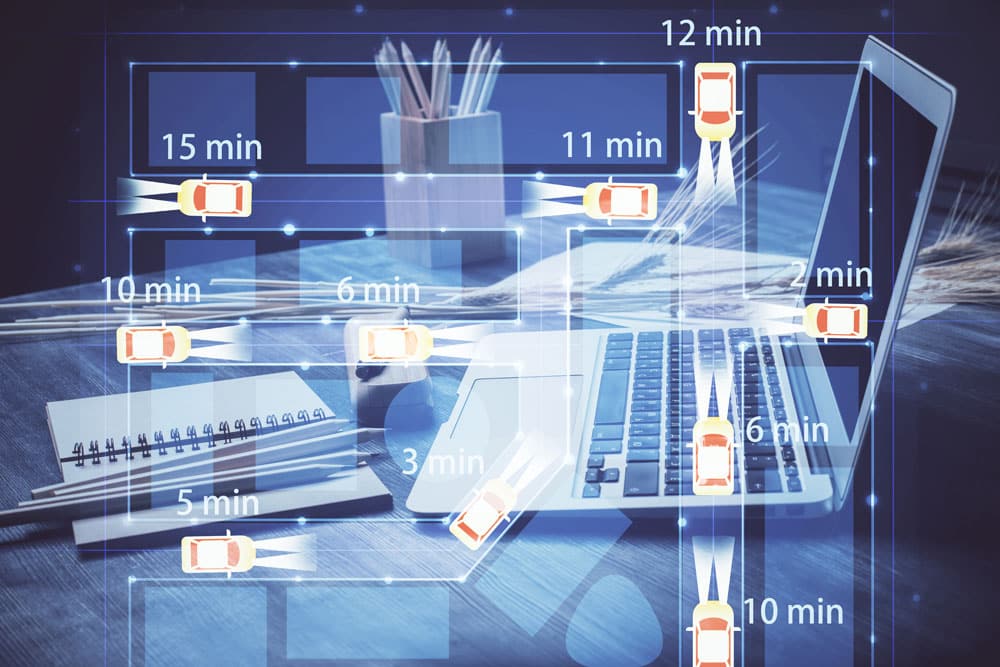
Data analysis can be categorized into two methodologies:
Trend analysis has been the traditional use of data and is important for planning purposes. This type of analysis takes the past occurrences, or trends, to help make decisions about future needs or performance. It is often static in its application, however, as ‘on-demand’ data is integrated into the analysis, more success with predictive analysis can be achieved.
Predictive analysis can have a direct influence on real-time operations and allows for more efficient uses of resources for day-to-day operations. By using more nuanced, real-time data, (such as weather, event schedules, traffic conditions, etc.) in conjunction with trend analysis, more detailed and accurate results can be found. This allows for smart solutions to be programmed with machine learning capabilities, leading to automated (predictive) decisions being made within operations.
When effective data analysis and improved operations are paired with the proper communication to the public, the goal of making life better begins to be realized.
Once the goals are set, it is important to understand the components of implementing a smart community strategy. These key elements are tools, commitment, and focus.
Tools are the tactical elements of the smart community as they are the practical solutions for delivering the products and services of the community and are the primary source of data collection. It is imperative that tools are:
The quality of the data and the ability to organize and interpret data starts with the tools. It is important to be intentional when selecting the tools and platforms to support the smart community solution.
Inherent in the success of any endeavor is the commitment of its champion(s). This will help keep the process on track and will protect against detractors or overzealous supporters. Important for smart community success is to have commitment to:
Having strong focus will keep the goal as clear as possible. It is important to focus intently on a few action items, work through the process to achieve the results and only then move on to the next goal. You will want to avoid the temptation of trying to do too much at the beginning by attempting to execute on parallel project goals. This can unintentionally involve too many stakeholders, strain funding resources, and create too many opportunities for something to go wrong.
Having milestone successes will allow opportunities to prove the model as you go and increase the chances of buy-in momentum as you progress. By limiting the focus and progressing intentionally, you can ensure the best technologies are available when you are ready.
Simply put, smart communities make the best use of the resources at their disposal to improve the quality of life for citizens. A smart community platform will help collect and organize data for analysis to improve operational and predictive services. When paired with a strategy that implements proper tools, is committed, and stays focused, a smart community can truly help Make Life Better. ◆

A major factor of sustainability is thinking about how we
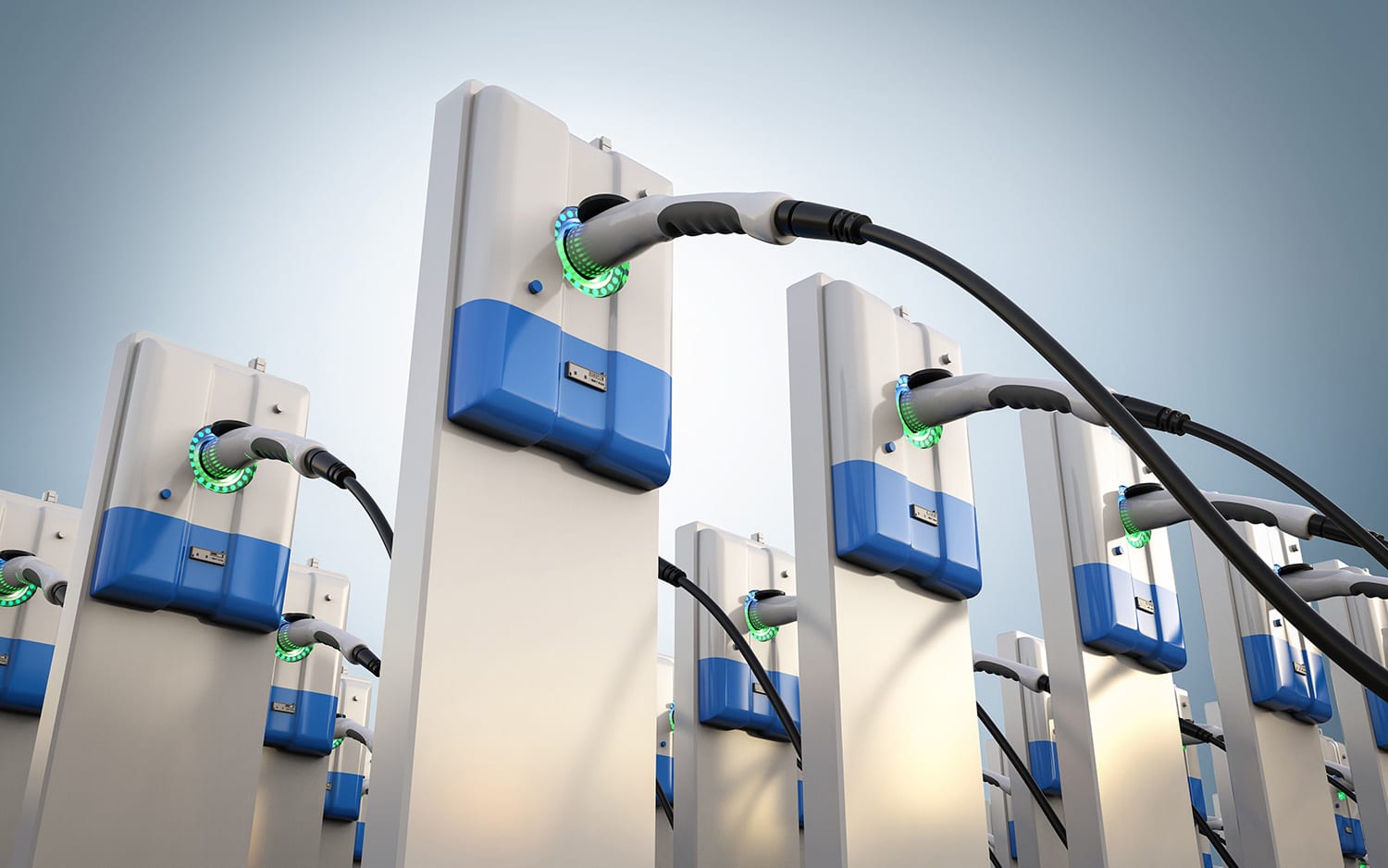
EV Readiness Perspectives

Aside from electric and automated vehicle use, what “green” practices
Parking & Mobility is IPMI’s flagship publication, covering the news, trends, analysis, technologies, and people of the parking and mobility industry, and how it affects and influences communities around the world.
| Cookie | Duration | Description |
|---|---|---|
| cookielawinfo-checkbox-advertisement | 1 year | Set by the GDPR Cookie Consent plugin, this cookie is used to record the user consent for the cookies in the "Advertisement" category . |
| cookielawinfo-checkbox-analytics | 11 months | This cookie is set by GDPR Cookie Consent plugin. The cookie is used to store the user consent for the cookies in the category "Analytics". |
| cookielawinfo-checkbox-functional | 11 months | The cookie is set by GDPR cookie consent to record the user consent for the cookies in the category "Functional". |
| cookielawinfo-checkbox-necessary | 11 months | This cookie is set by GDPR Cookie Consent plugin. The cookies is used to store the user consent for the cookies in the category "Necessary". |
| cookielawinfo-checkbox-others | 11 months | This cookie is set by GDPR Cookie Consent plugin. The cookie is used to store the user consent for the cookies in the category "Other. |
| cookielawinfo-checkbox-performance | 11 months | This cookie is set by GDPR Cookie Consent plugin. The cookie is used to store the user consent for the cookies in the category "Performance". |
| CookieLawInfoConsent | 1 year | Records the default button state of the corresponding category & the status of CCPA. It works only in coordination with the primary cookie. |
| elementor | never | This cookie is used by the website's WordPress theme. It allows the website owner to implement or change the website's content in real-time. |
| viewed_cookie_policy | 11 months | The cookie is set by the GDPR Cookie Consent plugin and is used to store whether or not user has consented to the use of cookies. It does not store any personal data. |
| Cookie | Duration | Description |
|---|---|---|
| _ga | 2 years | The _ga cookie, installed by Google Analytics, calculates visitor, session and campaign data and also keeps track of site usage for the site's analytics report. The cookie stores information anonymously and assigns a randomly generated number to recognize unique visitors. |
| _ga_02PMHW8YWC | 2 years | This cookie is installed by Google Analytics. |
| _ga_LC0QJJHM3J | 2 years | This cookie is installed by Google Analytics. |
| _ga_V9KYTSBYT2 | 2 years | This cookie is installed by Google Analytics. |
| iutk | 5 months 27 days | This cookie is used by Issuu analytic system to gather information regarding visitor activity on Issuu products. |
| Cookie | Duration | Description |
|---|---|---|
| mc | 1 year 1 month | Quantserve sets the mc cookie to anonymously track user behaviour on the website. |
| Cookie | Duration | Description |
|---|---|---|
| ultp_view_1052 | 1 day | No description |
| ultp_view_1058 | 1 day | No description |
| ultp_view_1060 | 1 day | No description |
| ultp_view_1064 | 1 day | No description |
| ultp_view_1068 | 1 day | No description |
| ultp_view_1070 | 1 day | No description |
| ultp_view_1072 | 1 day | No description |
| ultp_view_1078 | 1 day | No description |
| ultp_view_1082 | 1 day | No description |
| ultp_view_1088 | 1 day | No description |
| ultp_view_1100 | 1 day | No description |
| ultp_view_1103 | 1 day | No description |
| ultp_view_1114 | 1 day | No description |
| ultp_view_1118 | 1 day | No description |
| ultp_view_1122 | 1 day | No description |
| ultp_view_1125 | 1 day | No description |
| ultp_view_1130 | 1 day | No description |
| ultp_view_1132 | 1 day | No description |
| ultp_view_1135 | 1 day | No description |
| ultp_view_1541 | 1 day | No description |
| ultp_view_1554 | 1 day | No description |
| ultp_view_1557 | 1 day | No description |
| ultp_view_1560 | 1 day | No description |
| ultp_view_1563 | 1 day | No description |
| ultp_view_1568 | 1 day | No description |
| ultp_view_1572 | 1 day | No description |
| ultp_view_1576 | 1 day | No description |
| ultp_view_1580 | 1 day | No description |
| ultp_view_2305 | 1 day | No description |
| ultp_view_2321 | 1 day | No description |
| ultp_view_2338 | 1 day | No description |
| ultp_view_2342 | 1 day | No description |
| ultp_view_259 | 1 day | No description |
| ultp_view_270 | 1 day | No description |
| ultp_view_275 | 1 day | No description |
| ultp_view_286 | 1 day | No description |
| ultp_view_3074 | 1 day | No description |
| ultp_view_3115 | 1 day | No description |
| ultp_view_3334 | 1 day | No description |
| ultp_view_3336 | 1 day | No description |
| ultp_view_3338 | 1 day | No description |
| ultp_view_3340 | 1 day | No description |
| ultp_view_3346 | 1 day | No description |
| ultp_view_3354 | 1 day | No description |
| ultp_view_3361 | 1 day | No description |
| ultp_view_3367 | 1 day | No description |
| ultp_view_365 | 1 day | No description |
| ultp_view_367 | 1 day | No description |
| ultp_view_38 | 1 day | No description |
| ultp_view_3846 | 1 day | No description |